Sylvia Rodriguez
AP Art History 🖼
34 resourcesUnit 7 Required Works
- Basin (Baptistère de St. Louis)
Basin (Baptistère de St. Louis)
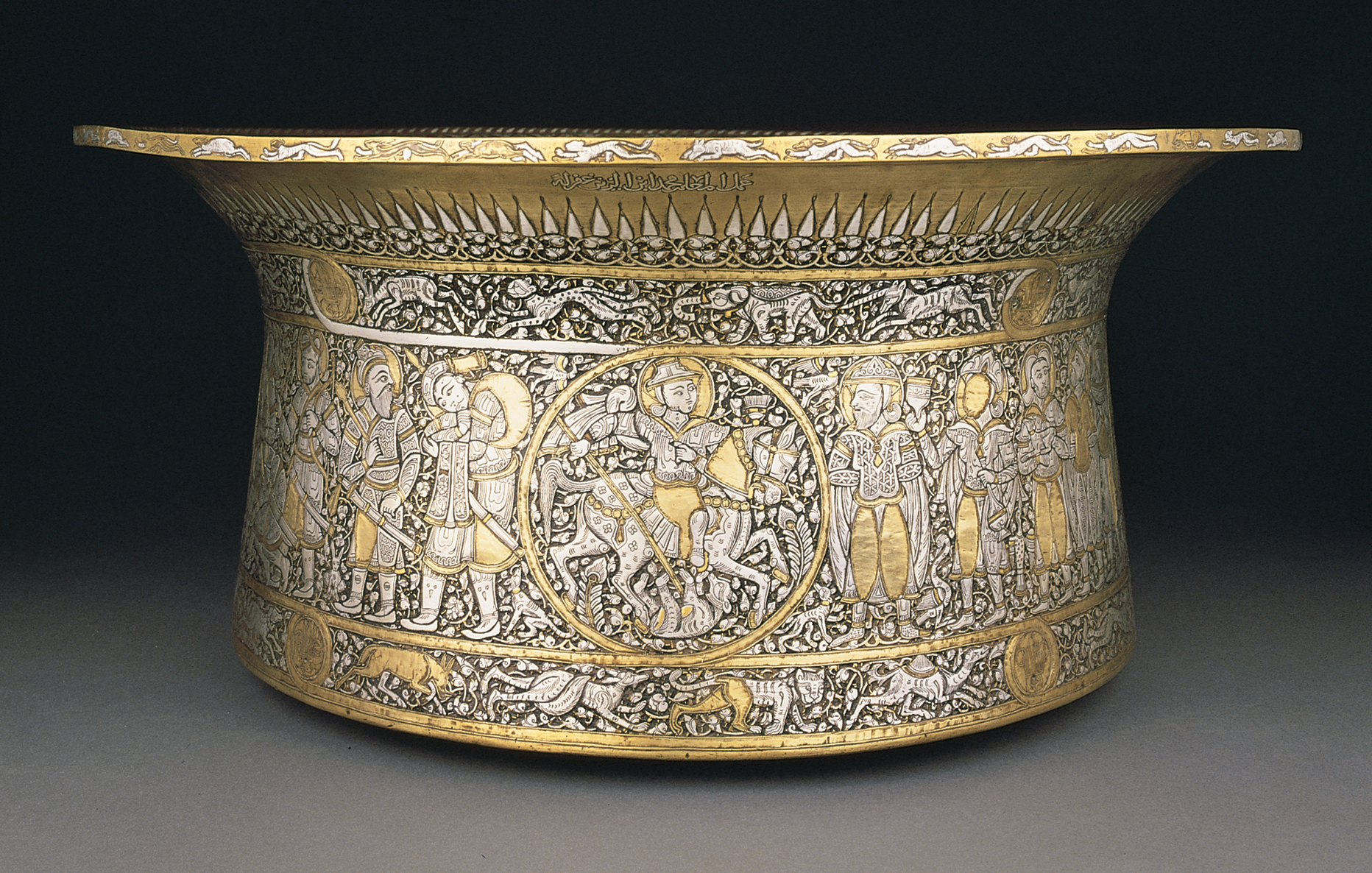
Mohammed ibn al-Zain, Basin (Baptistère de Saint Louis), c. 1320-40, brass inlaid with silver and gold, 22.2 x 50.2 cm, Egypt or Syria (Musée du Louvre, Paris)
- Created in the 14th century in Egypt.
- Made of brass and inlaid with silver and gold.
- Features scenes of hunting, warfare, and courtly life.
Bahram Gur Fights the Karg
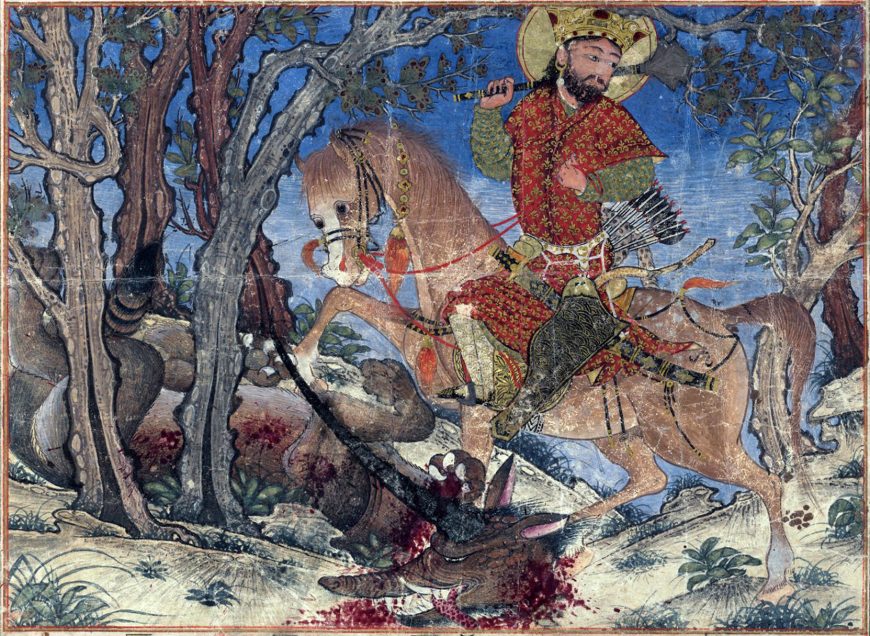
Bahram Gur Fights the Karg (Horned Wolf), from the Great Mongol Shahnama, c. 1330-40, Iran, ink, colors, gold, and silver on paper, folio 41.5 x 30 cm (Harvard Art Museums/Arthur M. Sackler Museum)
- A Persian miniature painting created in the 16th century.
- Depicts the legendary King Bahram Gur fighting a mythical creature called the Karg.
- Shows intricate details and use of vibrant colors.
The Ardabil Carpet
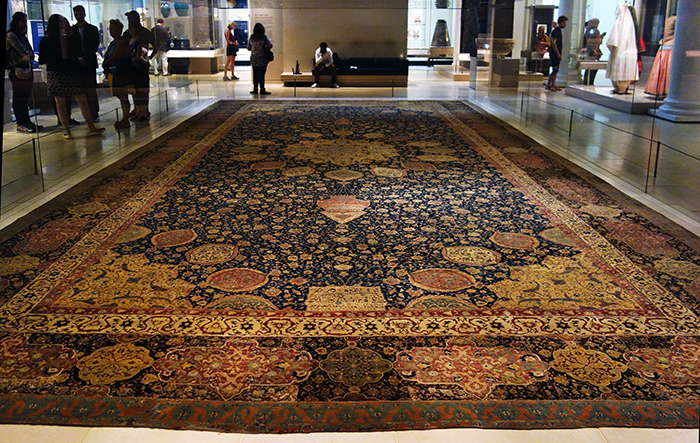
Medallion Carpet, The Ardabil Carpet, Unknown artist (Maqsud Kashani is named on the carpet’s inscription), Persian: Safavid Dynasty, silk warps and wefts with wool pile (25 million knots, 340 per sq. inch), 1539-40 C.E., Tabriz, Kashan, Isfahan or Kirman, Iran (Victoria and Albert Museum) (photo: Steven Zucker, CC BY-NC-SA 2.0)
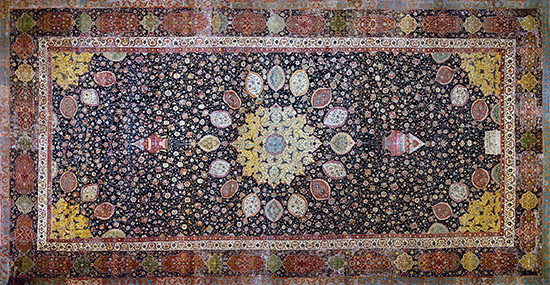
Medallion Carpet,The Ardabil Carpet, Unknown artist (Maqsud Kashani is named on the carpet's inscription), Persian: Safavid Dynasty, silk warps and wefts with wool pile (25 million knots, 340 per sq. inch), 1539-40 C.E., Tabriz, Kashan, Isfahan or Kirman, Iran (Victoria and Albert Museum)
- A Persian carpet created in the 16th century.
- Made of silk and wool.
- Features a central medallion and intricate floral designs.
The Kaaba
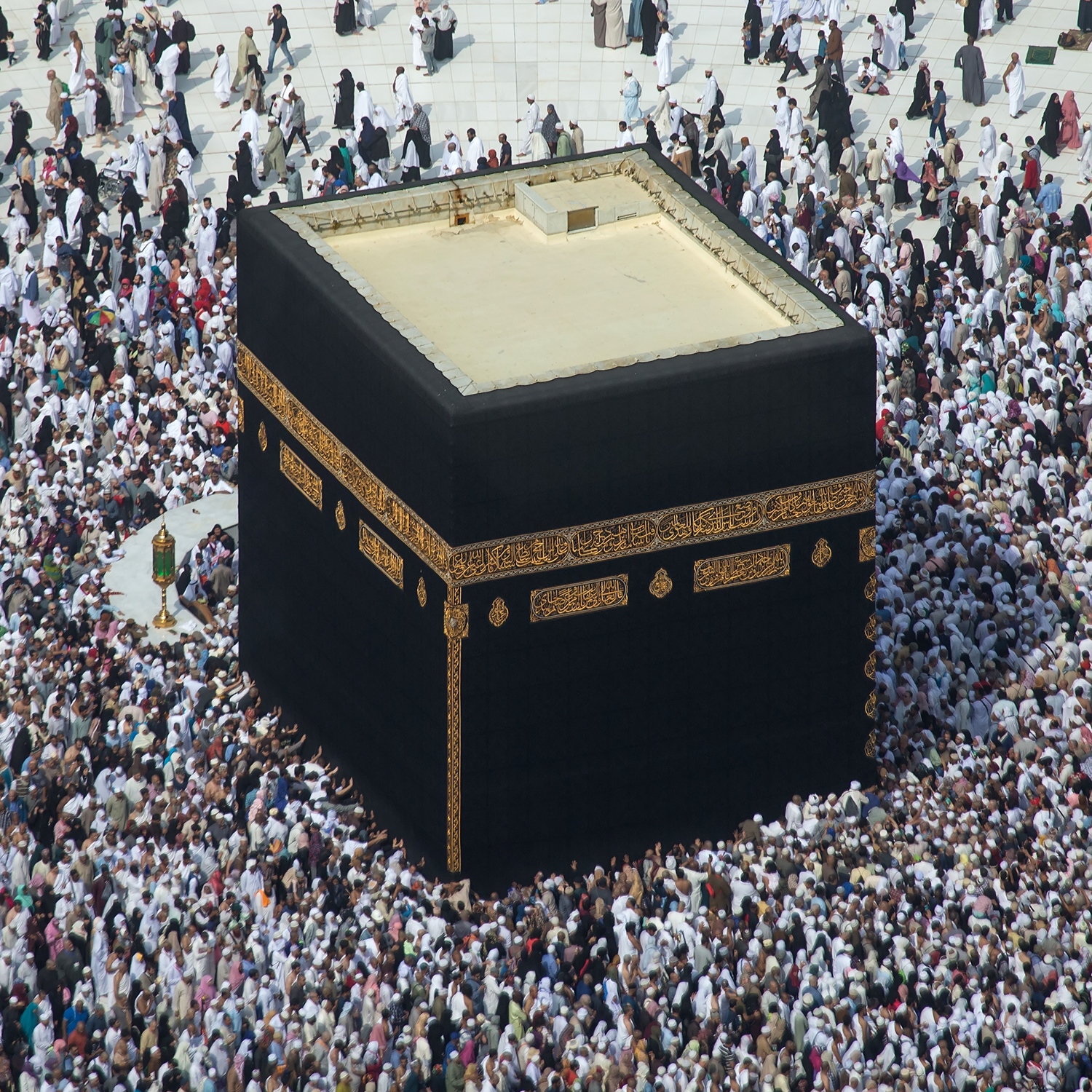
The Kaaba, granite masonry, covered with silk curtain and calligraphy in gold and silver-wrapped thread, pre-Islamic monument, rededicated by Muhammad in 631–32 C.E., multiple renovations, Mecca, Saudi Arabia (photo: Muhammad Mahdi Karim, GNU version 1.2 only)
- A cuboidal building in Mecca, Saudi Arabia.
- Considered the most sacred site in Islam.
- Covered with a black silk and gold curtain called the kiswah.
Jowo Rinpoche
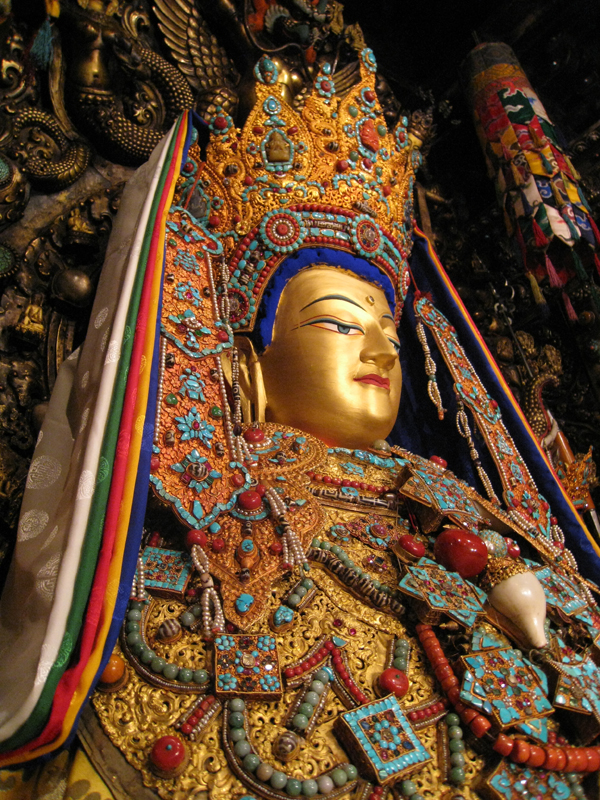
Jowo Shakyamuni, Jokhang Temple, Lhasa, Tibet, Yarlung Dynasty, brought to Tibet in 641(?), gilt metals with semiprecious stones, pearls, and paint and various offerings (photo: ziyi xu, CC BY-SA 2.0)
- A gilded bronze statue of the Buddha located in Lhasa, Tibet.
- Believed to have been created during the lifetime of the Buddha himself.
- Considered one of the most sacred Buddhist relics in Tibet.
Great Mosque (Masjid-e Jameh)
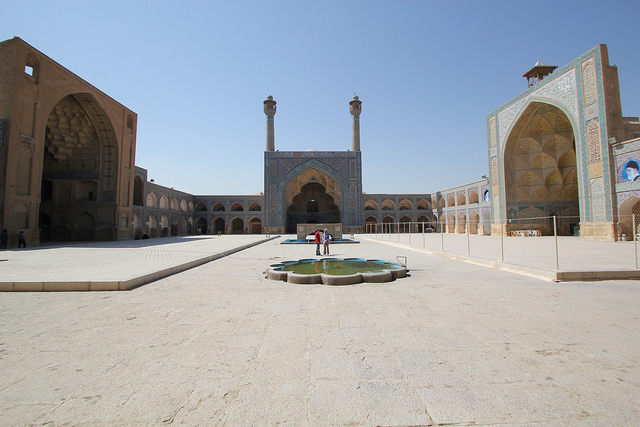
Courtyard, The Great Mosque or Masjid-e Jameh of Isfahan, photo: reibai (CC BY 2.0)
- A mosque located in Isfahan, Iran.
- Built over several centuries, with different architectural styles.
- Features intricate tilework, calligraphy, and geometric designs.
The Court of Gayumars
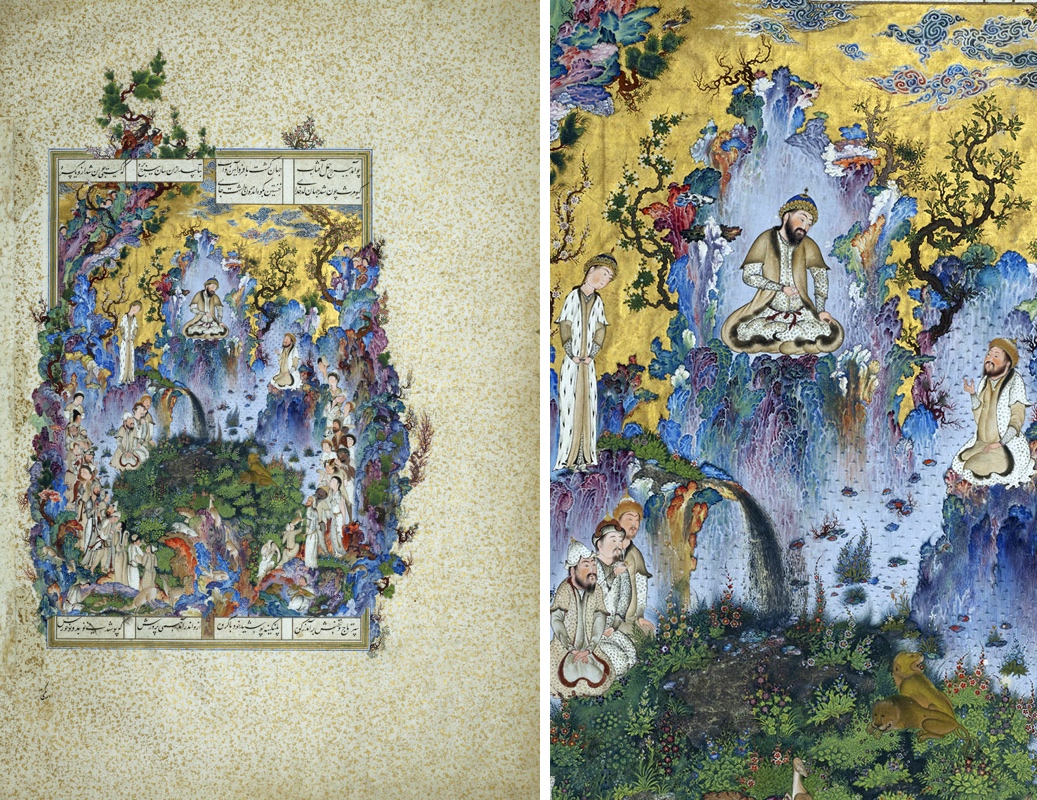
Whole page left, and detail, right: Sultan Muhammad, The Court of Gayumars, c.1522, 47 x 32 cm, opaque watercolor, ink, gold, silver on paper, folio 20v, Shahnameh of Shah Tahmasp I (Safavid), Tabriz, Iran (Aga Khan Museum, Toronto)
- A Persian miniature painting created in the 16th century.
- Depicts the first king of the mythical Iranian Pishdadian dynasty.
- Shows intricate details and use of vibrant colors.
Petra Jordan
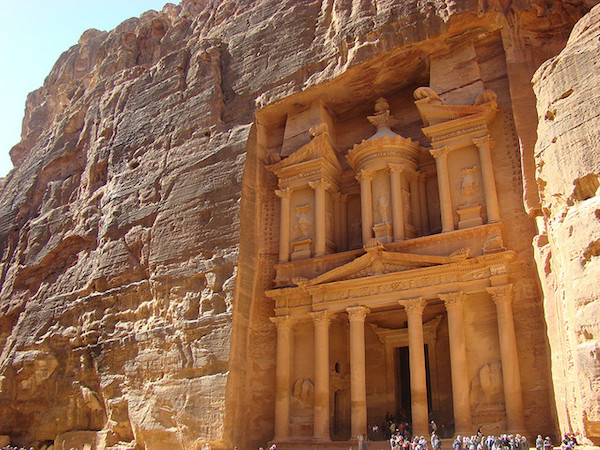
The so-called Treasury (Khazneh), of Petra (Jordan), 2nd century C.E., photo: Richard White (CC BY-NC-ND 2.0)
- An ancient city located in Jordan.
- Known for its rock-cut architecture and water management system.
- Was a major trading hub for spices, silk, and other luxury goods.
Buddha (Bamiyan)
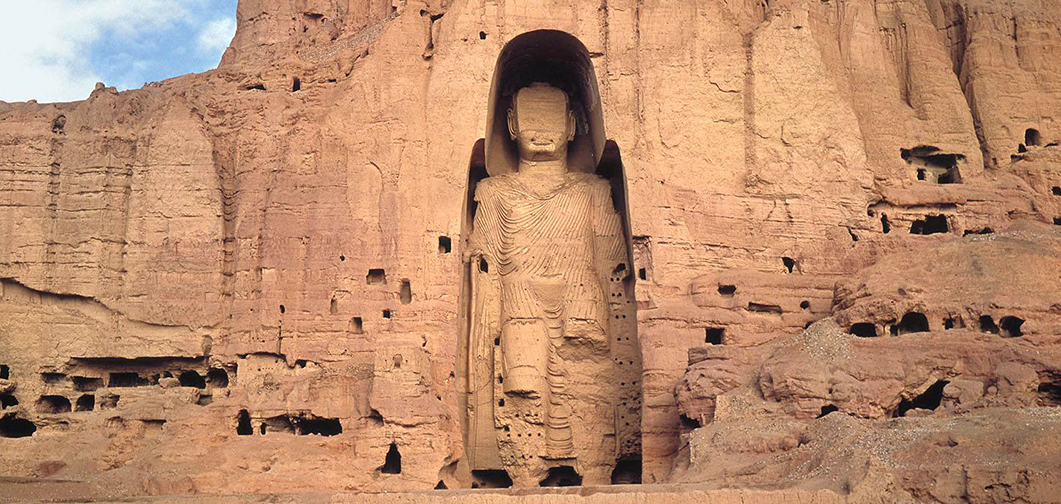
West Buddha surrounded by caves, c. 6th-7th c C.E., stone, stucco, paint, 175 feet high, Bamiyan, Afghanistan, destroyed 2001 (photo: © Afghanistan Embassy)
- Two monumental statues of the Buddha located in Afghanistan.
- Created in the 6th century.
- Destroyed by the Taliban in 2001.
Dome of the Rock
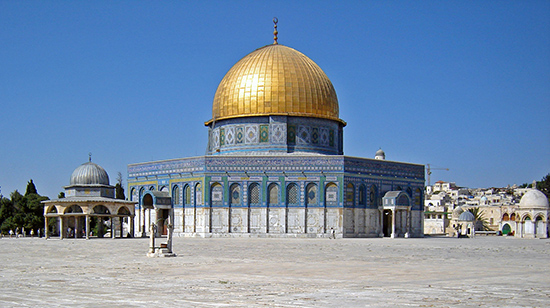
The Dome of the Rock (Qubbat al-Sakhra), Umayyad, stone masonry, wooden roof, decorated with glazed ceramic tile, mosaics, and gilt aluminum and bronze dome, 691-2, with multiple renovations, patron the Caliph Abd al-Malik, Jerusalem (photo: Orientalist, CC BY 3.0)
- An Islamic shrine located in Jerusalem, Israel.
- Built in the 7th century.
- Features a large golden dome and intricate mosaics.
Folio from a Qur'an
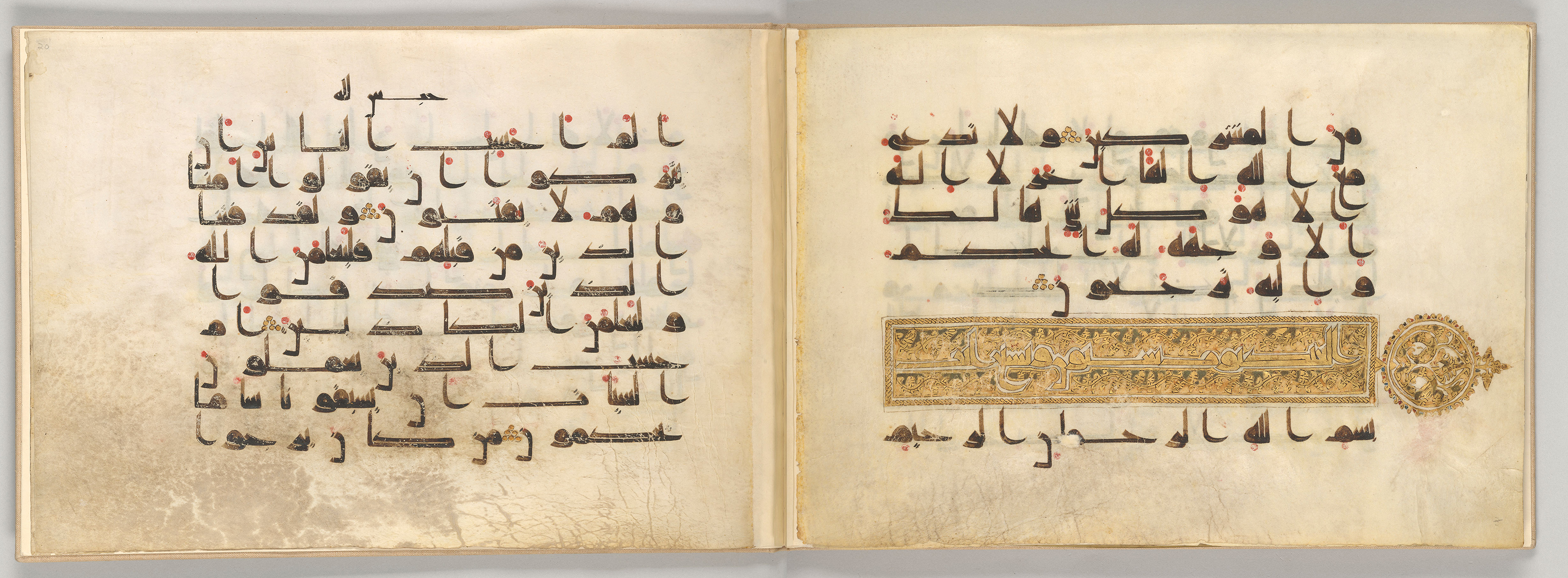
Qu'ran fragment, in Arabic, before 911, vellum, MS M. 712, fols 19v–20r, 23 x 32 cm, possibly Iraq (The Morgan Library and Museum, New York)
- A page from a 14th-century manuscript of the Qur'an.
- Written in calligraphy using gold ink on blue paper.
- Features a verse from the Qur'an surrounded by intricate floral designs.

Fiveable
Resources
© 2025 Fiveable Inc. All rights reserved.